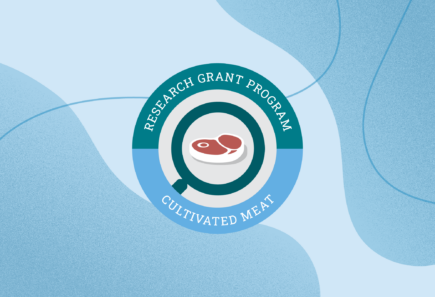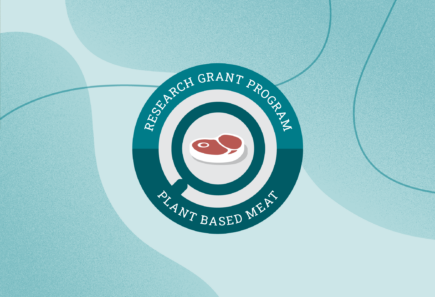
Developing cell lines for cultivated seafood
Years active: 2020Learn about Dr. Kevan Main and Dr. Cathy Walsh’s work at Mote Marine Laboratory to develop cell lines and methodology for cultivated seafood.

Learn about Dr. Kevan Main and Dr. Cathy Walsh’s work at Mote Marine Laboratory to develop cell lines and methodology for cultivated seafood.

This project will generate ingredients from byproducts of algae polysaccharide extraction to improve the flavor of alternative seafood products.

This project aims to determine the key molecules that contribute to cooked salmon’s odor and flavor and recreate these with optimal plant, fungal, and algal oils. The proposed solutions’ oxidative stability will be determined and possibilities for shelf-life extension provided.

In this project the role of food matrix components in modulating the flavor profiles, nutritional/chemical properties, and oxidative stability of plant-based seafood formulations during processing and storage will be investigated. Lexicon to accurately describe seafood flavor(s) will also be developed.

Dr Frank and his team are working to create more desirable plant-based seafood flavors. They will apply natural flavor chemistry pathways knowledge and sensory techniques to identify the most suitable flavor precursors for a range of plant-based seafood products.

Poor and inauthentic flavors of current seafood alternatives are a barrier to consumers’ acceptance. To address this shortcoming, the precision fermentation startup Nectariss plans to develop realistic seafood flavors based on the fermentation of mycelial fungi.

This project aims to identify affordable plant albumins for culture media. Dr. Richards and his team will characterize at least six plant albumins that support fish cell growth.
Efficient and cost-effective cultivated fish production will require precise optimization to encourage fast proliferation and highly efficient use of inputs while preventing premature differentiation. A variety of strategies can be employed to adjust various factors that contribute to these properties, including optimizing the starting cell line, improving the composition of the proliferation medium, and exploring the possibility of transdifferentiating easy-to-grow cell lines like fibroblasts into myogenic and adipogenic lineages.
To date, no robust environmental assessments have been conducted to compare alternative seafood to its conventional counterparts. An open-access, quantitative analysis of the relative environmental impacts of alternative seafood will help garner support for the industry from policymakers, nonprofit organizations, consumers, investors, foodservice outlets, and retailers.
Cultivated seafood will need to be supplemented with long-chain omega-3 polyunsaturated fatty acids to be nutritionally equivalent or superior to conventional seafood. However, how these compounds can best be incorporated has not been determined, and there are several potentially-viable strategies. Further research is needed to determine which strategies are most cost-effective and scalable and whether there are appreciable differences between methods in the quality of the final product.